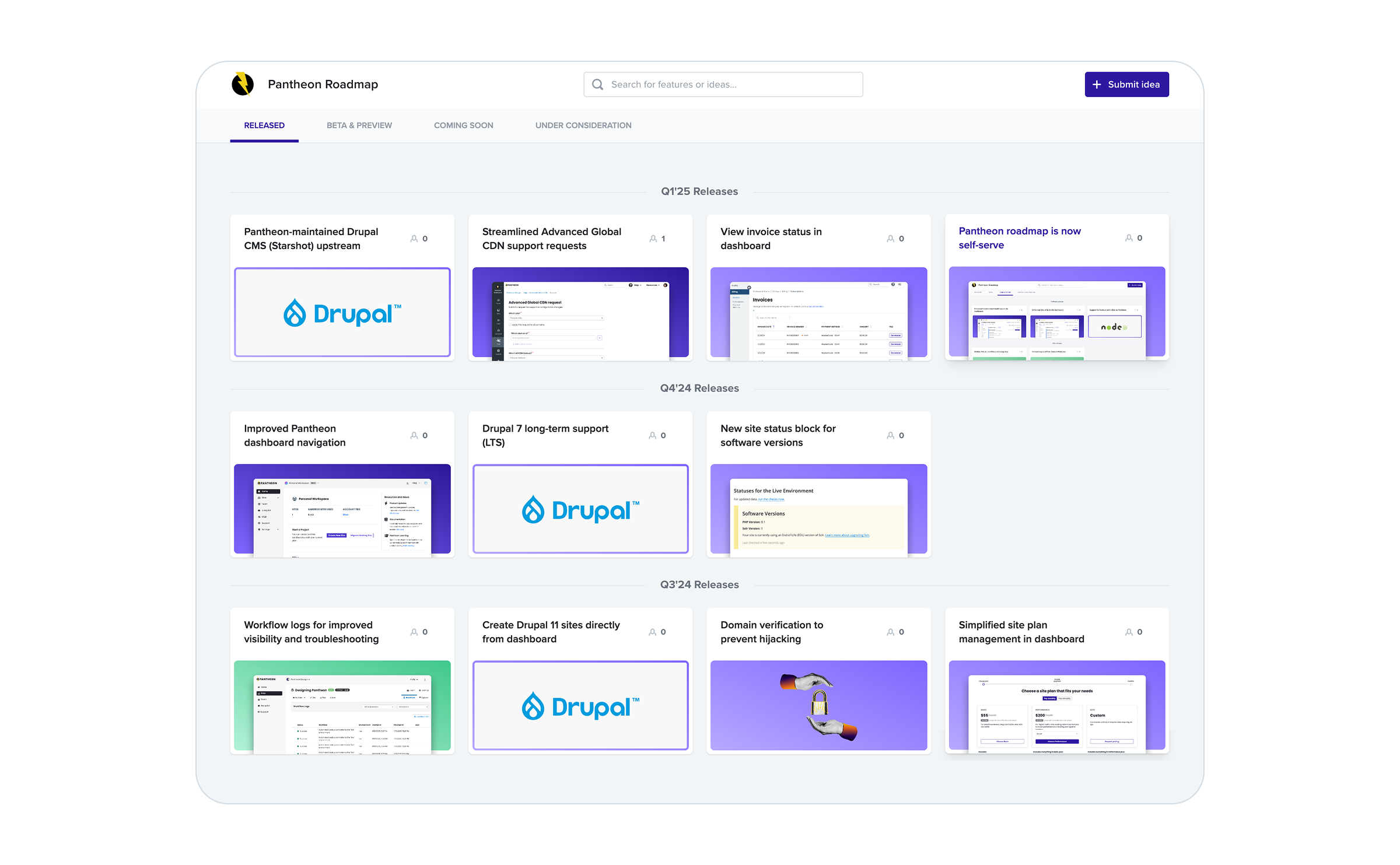3 Reasons Your Web Team Is Stuck in a Ditch and How to Free Them
Most executives understand how important their website is to their business and why it’s critical to take the same iterative, results-driven approach to managing their website that they take with the rest of digital marketing.
Yet most website teams are stuck in a ditch, making little to no forward progress, while everyone around them grows more and more frustrated. Eventually this leads to executives essentially giving up on the website as a means to drive the business and finding ways to work around it.
Why?
In my consultancy work and at Pantheon, I have worked directly with hundreds of website teams. Here is what usually happens to them, and what you can do to avoid it:
1. We spent all of our budget on a big website relaunch, and then we stopped.
Websites that drive results for businesses don’t come from giant relaunch projects. There are a lot of good reasons to replatform a website—a brand refresh or a new content management system, for example. But the relaunch is not the destination; it’s the beginning of the journey.
Great websites that drive businesses are the result of many, many iterations that improve conversions, simplify messaging, remove bottlenecks, and get better and better the more you learn about how to serve your customers. That’s how all great digital products are built.
If you want a great website that drives your business, you need to staff it accordingly. You will need (1) a product owner for the website who is accountable for the results and (2) design/developer resources—internal or external—that can keep iterating on the digital experience.
If you don’t have these resources in place, you are stuck.
2. We have a website team, but they are the bottleneck!
This is usually (but not always) the telling sign that you have a content management problem.
You know you have a content management problem when writers (e.g., marketers) are not able to manage the content of the website themselves. If it requires development work to publish pages to your website, then guess what your developers will spend all of their time doing? Publishing content instead of driving growth via your website.
Content management is a solved problem in the website industry, but many companies still suffer from it. If you aren’t using a proven content management system with which the marketing team is familiar and comfortable (usually Drupal or WordPress), then you are likely going to get into trouble here.
If you are a marketer trying to negotiate with your developers on this point, here’s a post that will arm you to go toe-to-toe with engineers on content management.
3. We don’t have the tools or process to work iteratively on the website.
Adopting an agile, iterative process to build a digital product takes work.
If ownership of the website is not clear, and if the product owner of the website isn’t tied to driving business outcomes, you will spin in circles.
If you have to wait for an external (usually IT) process every time you make a change to the site, you will get stuck.
If you don’t have WebOps (DevOps for website teams) in place, and you try to be agile, you will run into a brick wall.
If you haven’t worked at building a process where the product owner, designers, developers, and project managers can work together to manage a backlog, prioritize work, chunk it up, and work on it collaboratively—in other words, if you haven’t implemented agile—you will get stuck.
If you listen to Episode 4 of this podcast, “How WebOps Powers Agility,” you will be less stuck.
Again, all of these are straightforward problems to solve—and several companies, some of them likely to be your competitors, have solved them with the right mix of process, technology, and technology partners.
Take SendGrid, for example. A cloud-based email service responsible for sending billions of emails for companies around the world, SendGrid relied on a marketing website built with Ruby on Rails and hosted on SendGrid servers. The marketing team for this email marketing company had little autonomy, since any substantive change to the website required the product and engineering team to divert attention from their core product to service the needs of the marketing team.
This had predictable results: the website was stuck in a ditch. The development team suffered too: aging software and the lack of a stable dev/test/live workflow made maintaining the site difficult and deploying changes unpredictable.
All that changed when SendGrid migrated to WordPress powered by Pantheon WebOps and separated its website from its core product (and product/engineering team). With Pantheon’s collaborative continuous-integration workflow, the marketing team now has the tools they need to iterate the website 100% on their own power. They can iterate and test quickly, finding out what works and focusing their efforts there. The development team no longer worries about breaking the site when deployment fails to replicate a successful test environment and—well—fails. And as the new environment drives business growth, SendGrid can scale its website at will.
“Now we’re spending our time building features instead of preventing things from breaking,” says SendGrid User Experience Leader Katrina Lindholm. And that’s the point.
The rewards are huge for teams that take control of WebOps and get on a daily, weekly cadence of iteratively improving their websites. The leaders who figure out how to do this now are going to be lapping everyone else who’s stuck in a ditch —and will drive their career options forward along with their business.


